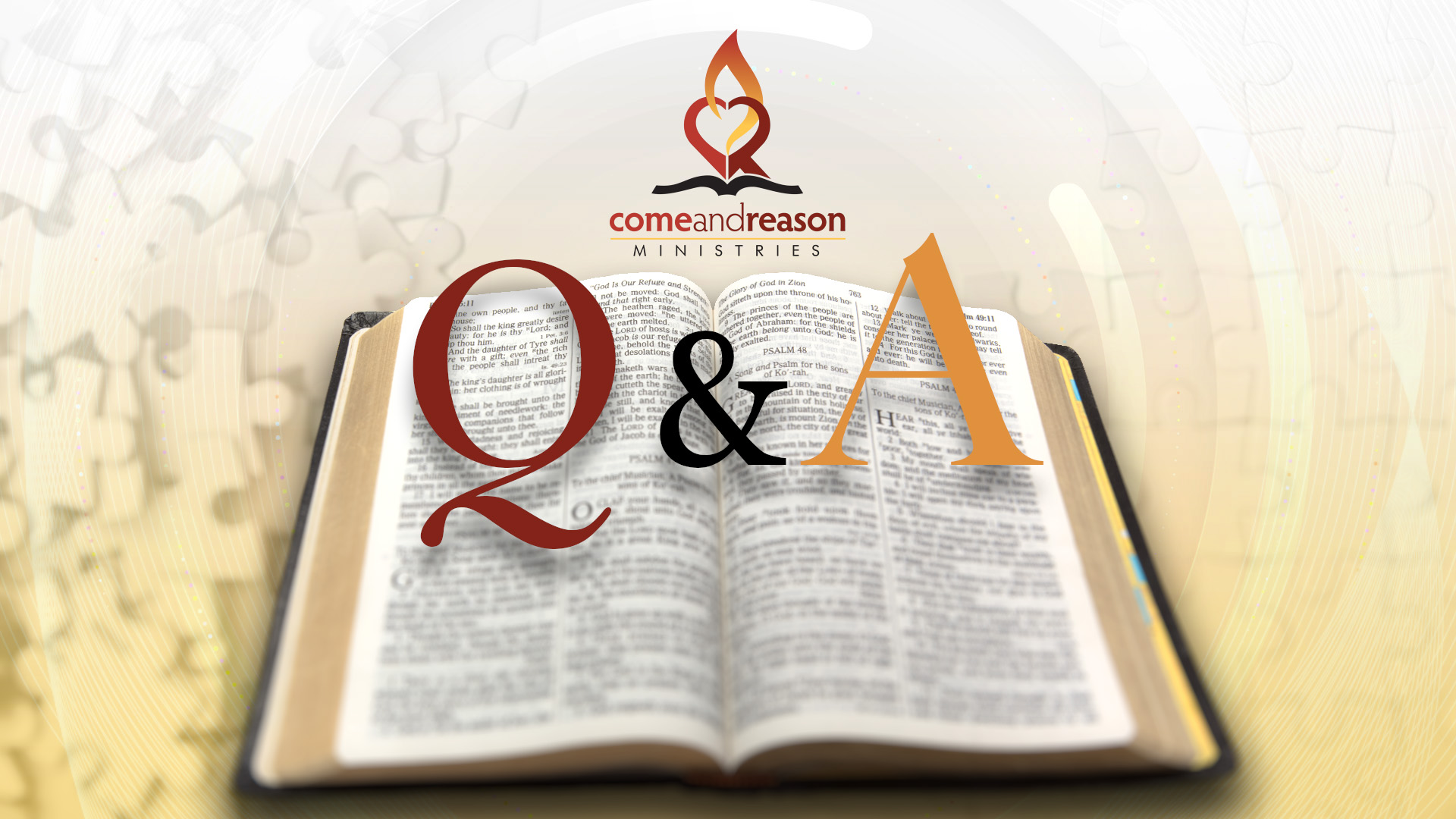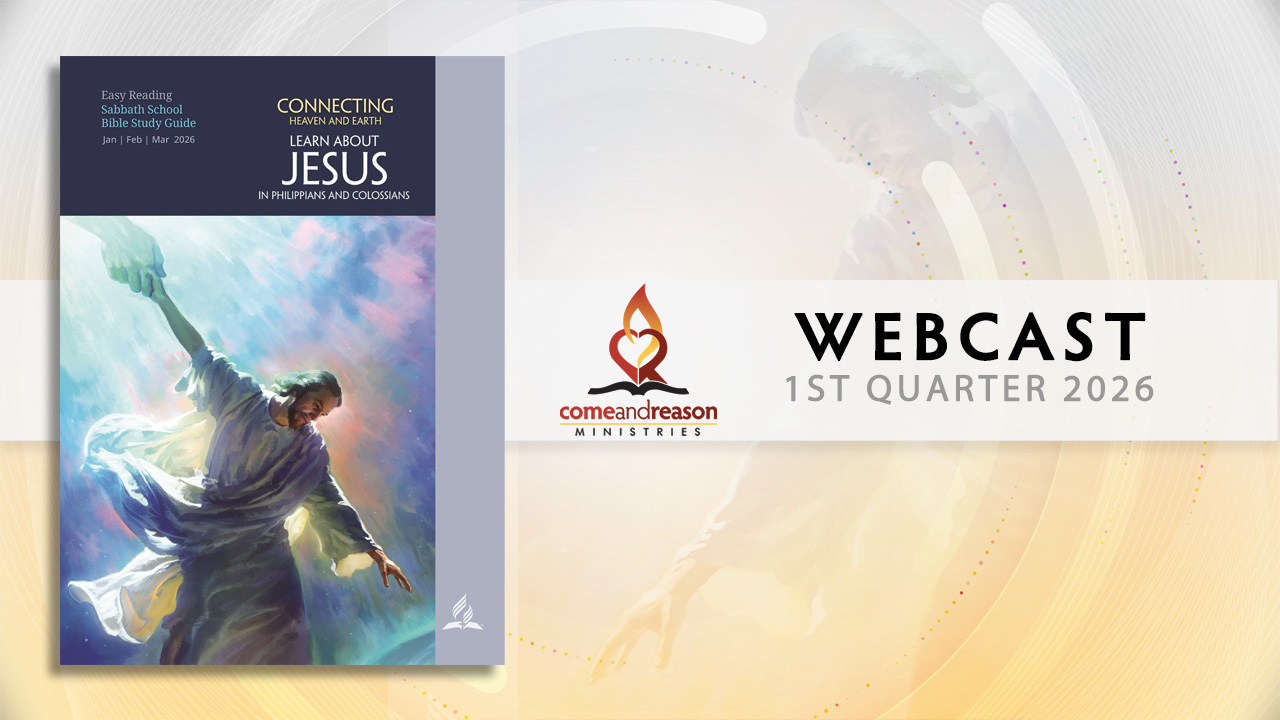Recently one of the members of my Bible Study Class gave me a copy of a small publication by a group of former SDAs. When I first perused the journal I was looking forward to reading it because it presented itself as a magazine which challenged conventional thought and reexamined long held traditions.
While I didnŌĆÖt appreciate the tenor or tone of the journal, as it came across very negative and hostile, it did raise several questions worth considering, and provides good practice at critical thinking and examining evidence.
The main question raised was, is the Great Controversy theme Biblical? Or is it only a product of Ellen WhiteŌĆÖs (EGW) imagination? Could we support the idea of a conflict over the character and government of God by Scripture alone or must we rely on Ellen White?
Here are the specific points used to criticize the Great Controversy (GC) theme:
- The GC theme is found only in the writings of EGW
- The GC theme diminishes the divinity of Christ
- The GC theme causes a divergence in how the Godhead is seen, with God being less approachable, loving, friendly than Christ
- The GC diminishes the atonement denying a ŌĆ£full and completeŌĆØ atonement at the cross
How would you respond if someone made these allegations to you? Could you demonstrate the truth from Scripture? LetŌĆÖs examine the evidence together.
Point One:┬Ā What Evidence Is There For The GC In Scripture?
- There was ŌĆ£warŌĆØ in heaven. Michael (Jesus) and his angels fought against the dragon and his angels (Revelation 12:7).
- What kind of war was this? It was a war of ideas and false allegations against God. The Bible tells us that we ŌĆ£warŌĆØ against everything ŌĆ£that sets itself up against the knowledge of GodŌĆØ (2Cor 10:3-5). The Greek word in Revelation 12:7 translated ŌĆ£warŌĆØ is ŌĆ£polemoŌĆØ from which we get ŌĆ£polemicŌĆØ or verbal argument. It was a war of words.
- Where did the false ideas and lies originate? Satan is the ŌĆ£father of liesŌĆØ (John 8:44). So in the war of words Satan used lies.
- What is the central focus of SatanŌĆÖs lies? GodŌĆÖs character and trustworthiness. ŌĆ£Did GOD really say…?ŌĆØ (Genesis 3:1).
- What was the agenda of this ŌĆ£warŌĆØ of words and these ideas misrepresenting God? Lucifer wanted to exalt himself above God as the one most loved, adored, and worshipped by the intelligences in heaven. (Isaiah 14:13,14).
So we do find solid Biblical evidence of a Controversy in Heaven over the trustworthiness of God, initiated by Satan by lying about God.
Point Two: Does The GC Diminish The Divinity Of Christ?
The magazine quoted an EGW quotation as evidence for this:
ŌĆ£The exaltation of the Son of God as equal with the Father was represented as an injustice to Lucifer, who, it was claimed, was also entitled to reverence and honor.ŌĆØ (Patriarchs And Prophets, pg. 35)
After this quotation from Ellen White the following assertion is made:
ŌĆ£In the great controversy paradigm, Jesus was not the eternal almighty God, God exalted him to be His equal at some time in the distant past.ŌĆØ
Does the GC theme and EGW teach Christ as less than the Father and the Father ŌĆ£exaltedŌĆØ Him to equality? Not according to EGW:
ŌĆ£There had been no change in the position or authority of Christ. Lucifer’s envy and misrepresentation and his claims to equality with Christ had made necessary a statement of the true position of the Son of God; but this had been the same from the beginning. Many of the angels were, however, blinded by Lucifer’s deceptions.ŌĆØ┬Ā (Pratriarchs And Prophets, pg. 38)
Ellen White states elsewhere regarding the divinity of Christ:
In Christ is life, original, unborrowed, underived. “He that hath the Son hath life.” 1 John 5:12. The divinity of Christ is the believer’s assurance of eternal life. “He that believeth in Me,” said Jesus, “though he were dead, yet shall he live: and whosoever liveth and believeth in Me shall never die. Believest thou this?” (Desire Of Ages, pg. 530).
“The light of the knowledge of the glory of God is seen in the face of Jesus. From the days of eternity the Lord Jesus Christ was one with the FatherŌĆ””
So, when we read a little wider it become quite clear that EGW and the GC theme both teach the full divinity of Christ as one who was always equal to the Father. The confusion appears to have arisen from SatanŌĆÖs allegations against God and Christ, when Satan alleged Christ to be less than the Father.
I wrote the editor of the magazine and pointed out the above and received the following response:
Yes, I know about the quotation from PP on page 38 that you cite. In fact, however, the claim that God had to point out to the angels that the Son’s position was equal with his own assumes that this equality was not recognized prior to God’s exalting the Son. Even if the claim is that they really WERE equal but God chose a particular time to make a public declaration of the fact, the assumption remains the same: the angels were not aware that the Son was actually equal with God and that they had to do what He said.
The angels knew the Son was their Creator. There was no doubt; God did not have to clarify anything: “In the beginning was the Word, and the Word was with God, and the Word was GodŌĆ”without Him nothing was created that has been createdŌĆ”” (Jn. 1:1-5).
So, did the angels in heaven have clarity on the divinity of Christ or was there room for uncertainty? Does the Bible provide support for this idea?
First, just think about the issue. Does anyone find it credible that Lucifer in heaven stood up to the angels and said, ŌĆ£I am a created being with finite abilities and can die. We all know Jesus is divine, fully God, eternal, infinite, and immortal. But follow me anywayŌĆØ and one third of the sinless angels would have followed him? That is basically what we have if we remove the GC theme. It is absurd. But, our reason alone is not enough. What about Scriptural evidence?
God is infinite, and as such is unapproachable by created, finite beings, even angels (1Tim 6:16). God is love (1John 4:8). Love enjoys intimacy and unity “at-one-ness” with the object of its love. But God being infinite was unapproachable to His created beings, therefore one member of the Godhead humbled Himself to move toward His creation so He would be more accessible to them. This was Christ, in His pre-human form. He was fully God, but in the form of an angel (Exodus 3:2-5, Acts 7:30-38, Judges 2:1, 13:17-22, Zech 3:1-7, Daniel 10:13,21, Jude 9, 1Thes 4:16, John 5:25-28).
Christ, when he became human, was still fully God. Did Christ, who was fully God, do such a good job of being a human that most humans of His community failed to recognize He was God? Is this not compelling evidence that in heaven Christ, as fully God, but manifesting Himself as an angel, would have been such a good angel that the angels could have failed to recognize His true nature as fully God. This is what EGW and the GC view says.
Interestingly, 2Peter 1:19 actually uses the name ŌĆ£LuciferŌĆØ for Christ, translated into English as ŌĆ£Morning Star.ŌĆØ The Greek is phosphorus, and the Latin is ŌĆ£Lucifer,ŌĆØ which means bright light, or bright star. And of course Jesus is the ŌĆ£light which lightens all menŌĆØ (John 1:4). So, we have a Biblical foundation for the GC in heaven, in which Lucifer made allegations against Christ, which caused enough doubt that one third of the angels rebelled.
Point Three: Does The GC View Cause A Disparity In How We See The Godhead, With God Being Less Loving, Gracious, Or Approachable Than The Son?
Certainly, a disparity does exist in the minds of many Christians regarding the Godhead, with many seeing God as a stern judge and Jesus as our loving Savior. But, did this originate with Adventism, or was it part of the Advent message to remove this misunderstanding about God?
The disparity in how we see the Godhead began when Constantine converted to Christianity and the Roman concept of government and authority infected how we see God and His government. The Catholic system taught a system with an abusive, unapproachable God who required payment, works, and the pleadings of not only His Son, but Mary and the saints as well. It is from this history that the distortion in how Christianity sees God originated. The SDA church was called to help remove this distortion.┬Ā One quote from EGW will suffice to demonstrate this point:
Had God the Father come to our world and dwelt among us, veiling His glory and humbling Himself, that humanity might look upon Him, the history that we have of the life of Christ would not have been changed in unfolding its record of His own condescending grace. In every act of Jesus, in every lesson of His instruction, we are to see and hear and recognize God. In sight, in hearing, in effect, it is the voice and movements of the Father. (Letter 83, 1895)
Point Four:┬Ā The GC Diminishes The Atonement Denying A ŌĆ£Full And CompleteŌĆØ Atonement At The Cross
In order to understand this issue one has to understand how the Roman Church changed God’s law (see last weekŌĆÖs blog, The Little Horn, GodŌĆÖs Law and How You Have Been Deceived). In a nutshell the Roman Church didn’t merely change the 10 Commandments (removing number 2, splitting number 10, and changing the Sabbath), it changed the entire concept of God’s law from a natural law upon which life is built (i.e. Laws of health type laws) to imposed, enacted, and legislated type of laws, like humans impose and to which we must adhere or else get punished by the imposer of law. This change in the idea of God’s law led to a complete misinterpretation of the plan of salvation to a legal payment of sin debt to a God who imposed law and must impose penalties for breaking His law.
With this false idea of the sin problem in mind an ŌĆ£atonementŌĆØ model was developed to deal with paying our legal debt and teaches that all sins, past, present, and future were laid upon Christ at the Cross and ŌĆ£full paymentŌĆØ or ŌĆ£atonementŌĆØ was made at the Cross. With this idea in mind, any further application of what Christ accomplished at the Cross becomes unnecessary and those who hold to this view allege that if one sees an additional work for Christ in applying His achievement to humanity, then the atonement was incomplete at the cross.
This is all based on a false understanding of GodŌĆÖs law with subsequent misunderstand of what was necessary to resolve the sin problem.
Adventism was called to challenge this idea and turn the mind back to a Triune God of love, who, when creating, created all things to operate in harmony with Their character of love. Thus the law of love, upon which all law hangs, the royal law, is a principle of giving, a design template that God created His universe to operate upon (Mat 22:40, James 2:8, 1Cor 13:4,5).
An example, with every breath we freely give away CO2 to the plants and the plants freely give O2 to us, which gives life to both. If we “hord” and selfishly keep our CO2 we will die, not as a infliction for breaking the law of respiration, but as the unavoidable result of being “lawlessŌĆØ (breaking the law of respiration).
This principle of giving is a design template for creation based on God’s character of love. Sin is “lawlessness” or deviating from the design God built life to operate upon, selfishness, (keeping all your CO2 and not freely giving). Thus the breaking of the design template, (sin) breaking the “law,” results in death, just as the scripture says (Romans 6:23, James 1:15). God could not save mankind deviant from the way He built life to exist, so Christ came to do for man what man could not do for Himself; fix the deviation in the human being.
Think of it this way, when man sinned did God get changed? Did God’s law get changed or is God and His law unchangeable? So when man sinned mankind got changed! Christ’s purpose was to change back what had been changed by sin ŌĆō and that was not God, nor His law, but the very nature and condition of humankind, which no longer operated in harmony with God’s design, but was in a terminal condition of selfishness. This is why He became human.
Therefore, in Jesus Christ, the human species was saved at the Cross, full and complete. Because of Jesus a human being will always exist. Yet, not every individual human being will be saved. Why? Because what Christ achieved at the Cross was the remedy to our sin condition and this remedy must be freely accepted by and applied to those who are saved.
So all who accept Christ open their heart/mind in trust and the Holy Spirit comes and recreates in them a new heart and right spirit, restoring God’s law of love again into humanity (Psalms 51:5). This is the new convenant, “I will write my law on your hearts and minds” (Heb 8:10). This is only possible because of what Christ achieved at Calvary.
Therefore, after Calvary, it was expedient to send the Spirit, “who would take” all Christ achieved and “make it known” to us (John 16:15). In other words, He would take Christ’s perfection and reproduce it in us, thus “it is no longer I that live but Christ lives in me.” (Gal 2:20). We “become partakers of the divine nature” and receive “the mind of Christ.” (2Pet 1:4, 1Cor 2:16). ┬ĀThis is a real, literal, and an actual experience in the one who trusts in Christ. This is the genuine atonement, when sinners are brought back into actual unity of heart and mind with their Creator! We are ŌĆ£at-oneŌĆØ with God when we have hearts, minds, and characters that love as He does!
Yes, the Great Controversy is real! It is Bible-based and it is the message which removes the distortions about God, His character, His government, and the nature of love! It is the message which frees the heart and mind from fear of God and enables us to trust Him, and, in trust, experience the full ŌĆ£at-one-mentŌĆØ that occurs when the Spirit applies all Christ has achieved in our hearts and minds, transforming us from the inside out.











 using your credit or debit card (no PayPal account needed, unless you want to set up a monthly, recurring payment).
using your credit or debit card (no PayPal account needed, unless you want to set up a monthly, recurring payment). instead?
instead?